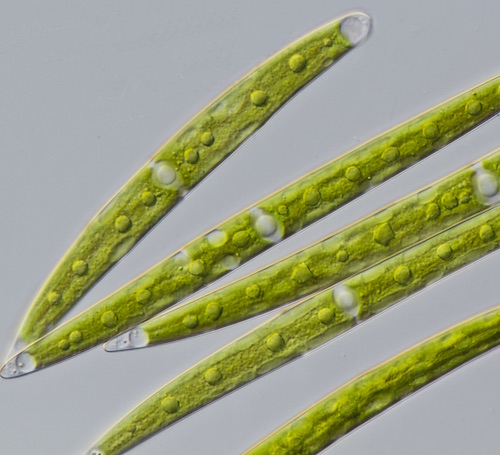 Evolution
Evolution
 Intelligent Design
Intelligent Design
The Origin of Plants Depended on “Pre-adaptation,” Another Word for “Preparation”

One of the most difficult problems for evolutionary biologists to explain is how adaptations manage to appear at the right time for the next stage of evolution to take place. This problem was succinctly summarized by Hugo de Vries, a Dutch botanist. I paraphrase: It’s not the survival of the fittest, it’s the arrival of the fittest that needs explanation.
To get around the problem, current evolutionary biologists use a word that stands in for this problem: pre-adaptation. In other words, things get ready for what is to come in advance of its arrival. Here’s an example. Science Daily reports:
[A] team of scientists from the John Innes Centre, the University of Wisconsin, Madison, and other international collaborators, has discovered how an ancient alga was able to inhabit land, before it went on to evolve into the world’s first plant and colonize the earth…
Dr. Delaux said: “At some point 450 million years ago, alga from the earth’s waters splashed up on to barren land. Somehow it survived and took root, a watershed moment that kick-started the evolution of life on earth. Our discovery shows for the first time that the alga already knew how to survive on land while it was still in the water. Without the development of this pre-adapted capability in alga, the earth could be a very different place today. [Emphasis added.]
Imagine this scenario: Before plants have colonized the land 450 million years ago, the only stuff on land is an ancient kind of fungus. An ancient algal species, the precursor to modern plants, is living in the sea. For some unknown reason it develops pathways that will enable it to have a symbiotic relationship with the fungus, without which it could not survive on land.
How do we know this? The genes for the symbiotic pathway exist in the modern versions of the ancient alga.
Dr. Delaux and colleagues analyzed DNA and RNA of some of the earliest known land plants and green algae and found evidence that their shared algal ancestor living in the Earth’s waters already possessed the set of genes, or symbiotic pathways, it needed to detect and interact with the beneficial AM [arbuscular mycorrhiza] fungi.
With the pathway present, when the time came and the alga splashed up on the shore, it was prepared to share resources with the fungal species that was there. Maybe it had to splash up many times before it had assembled the necessary pathway. Each time, though, it would have died without the symbiotic relationship with the fungus. It was only when the symbiotic pathway was there that the alga could survive on land.
It’s difficult to explain how a pathway needed to survive could develop piecemeal, when there is no benefit until the whole thing is assembled. (That’s an understatement.) Perhaps it was using the pathway for something else, some would say, and it just happened to provide the means for symbiosis. We just happen to be on the lucky world where the pathway for symbiosis was assembled.
I would tend to discount this pre-adaptationist story (for the original paper go here) because it is so unlikely on Darwinian grounds, were I not an intelligent design proponent. There are numerous other examples that parallel this one, though. We find pre-adapted genes in animals that never have developed the body plans or structures that require those genes. What are they doing there?
When organisms develop the genes and pathways their descendants will use at some future time, before they need them for that particular thing, it’s called pre-adaptation, exaptation, or co-option. Whatever you call it, it’s either a directed process or an extremely lucky one. Evidence of directed evolution, planning, or any kind of foresight is inimical to Darwinism, so perhaps it’s not surprising that the name pre-adaptation is assigned, and it’s left at that. But foresight is exactly what we expect from designed processes. Pre-adaptation is another word for preparation — something all of us should recognize as a hallmark of design.
Image: Green alga, by Michael Melkonian via John Innes Centre.
